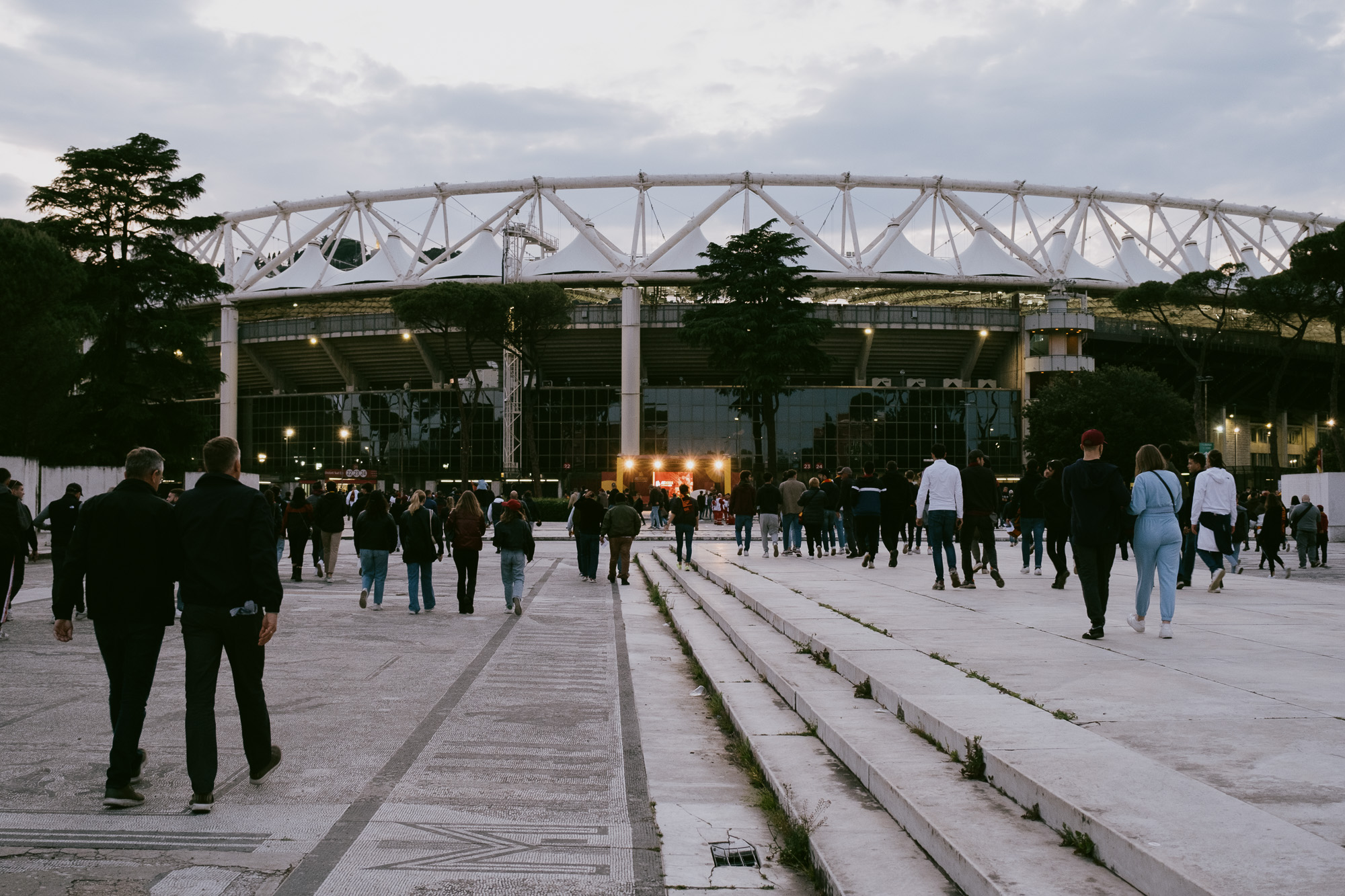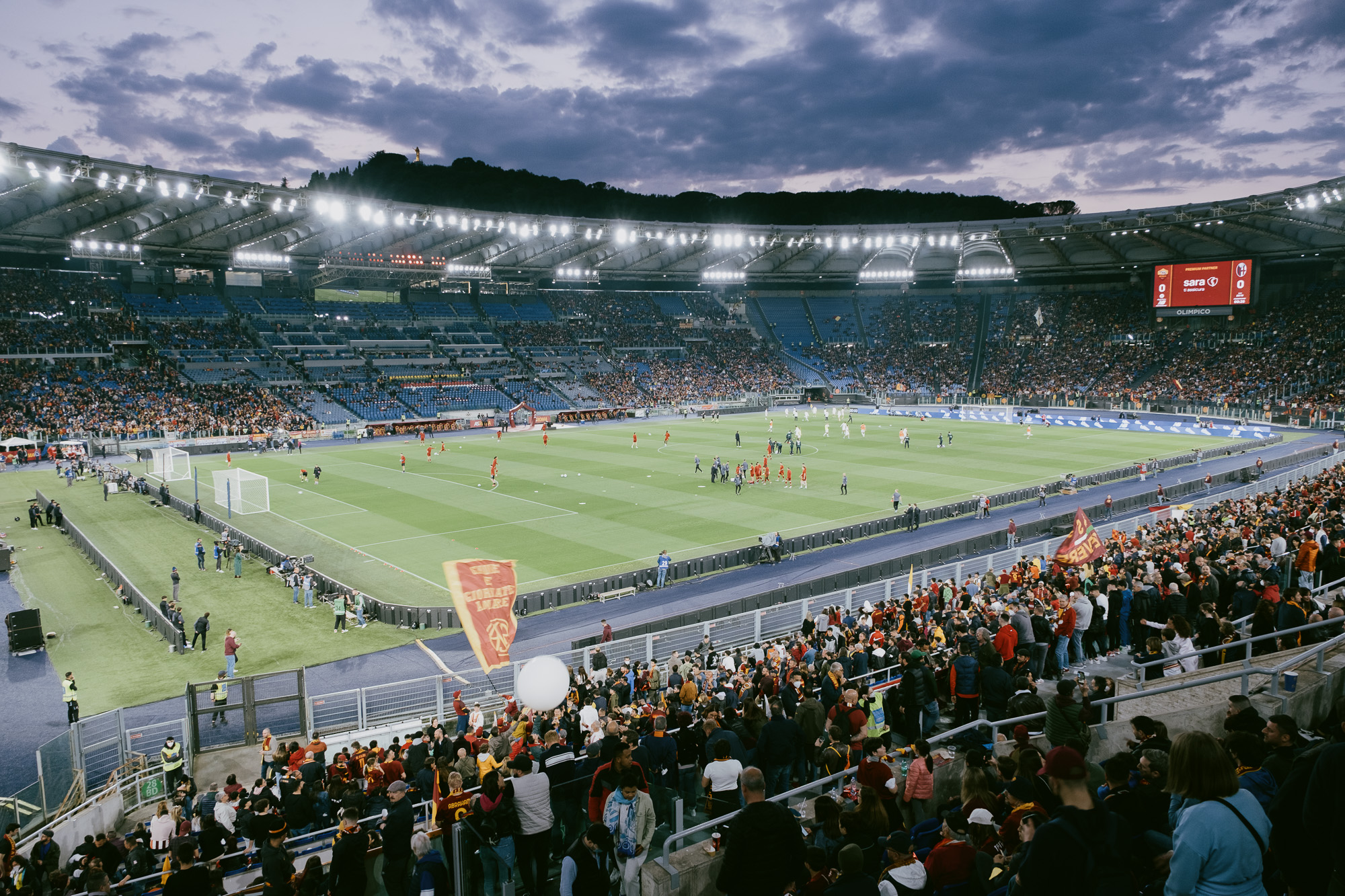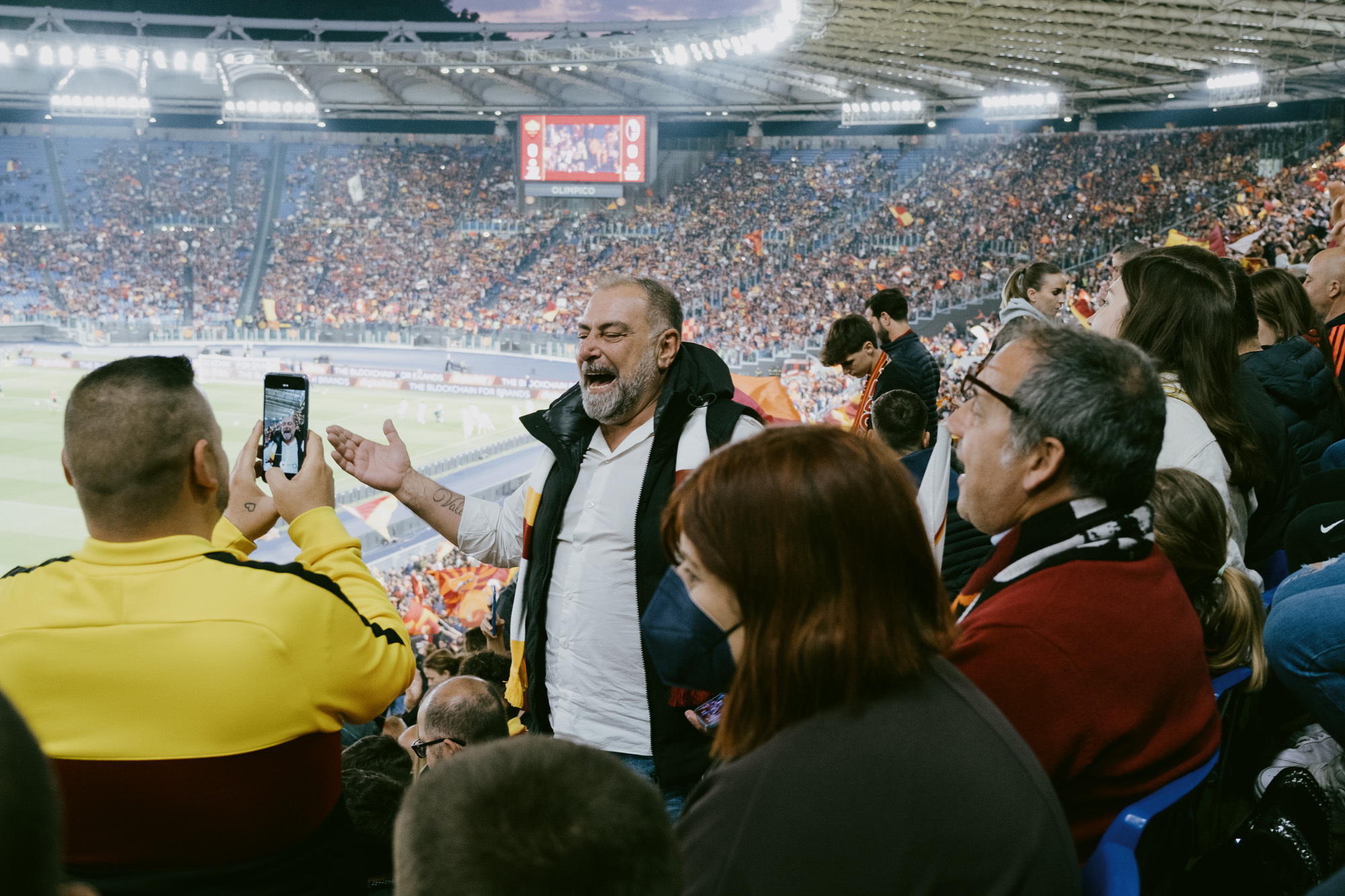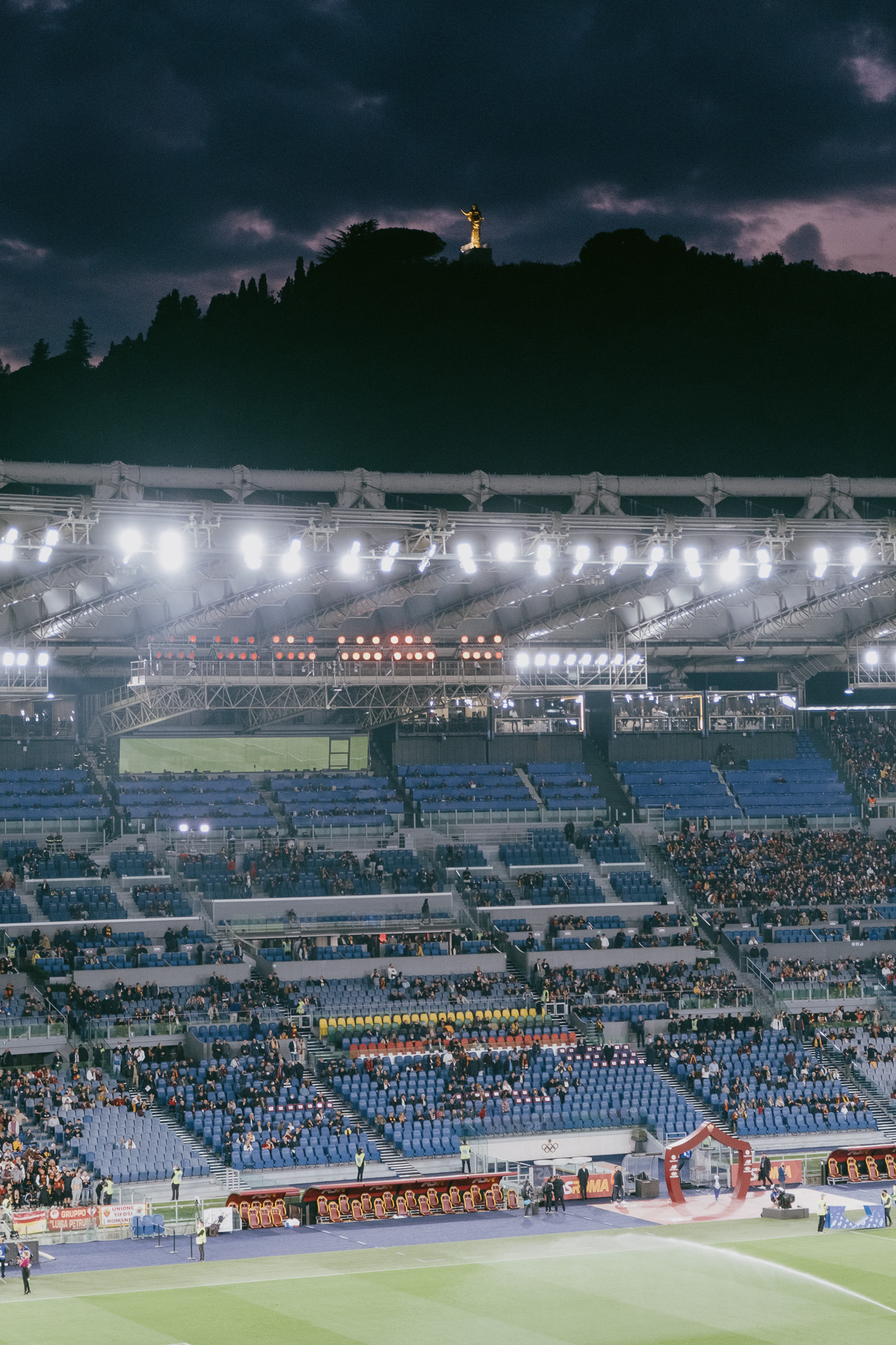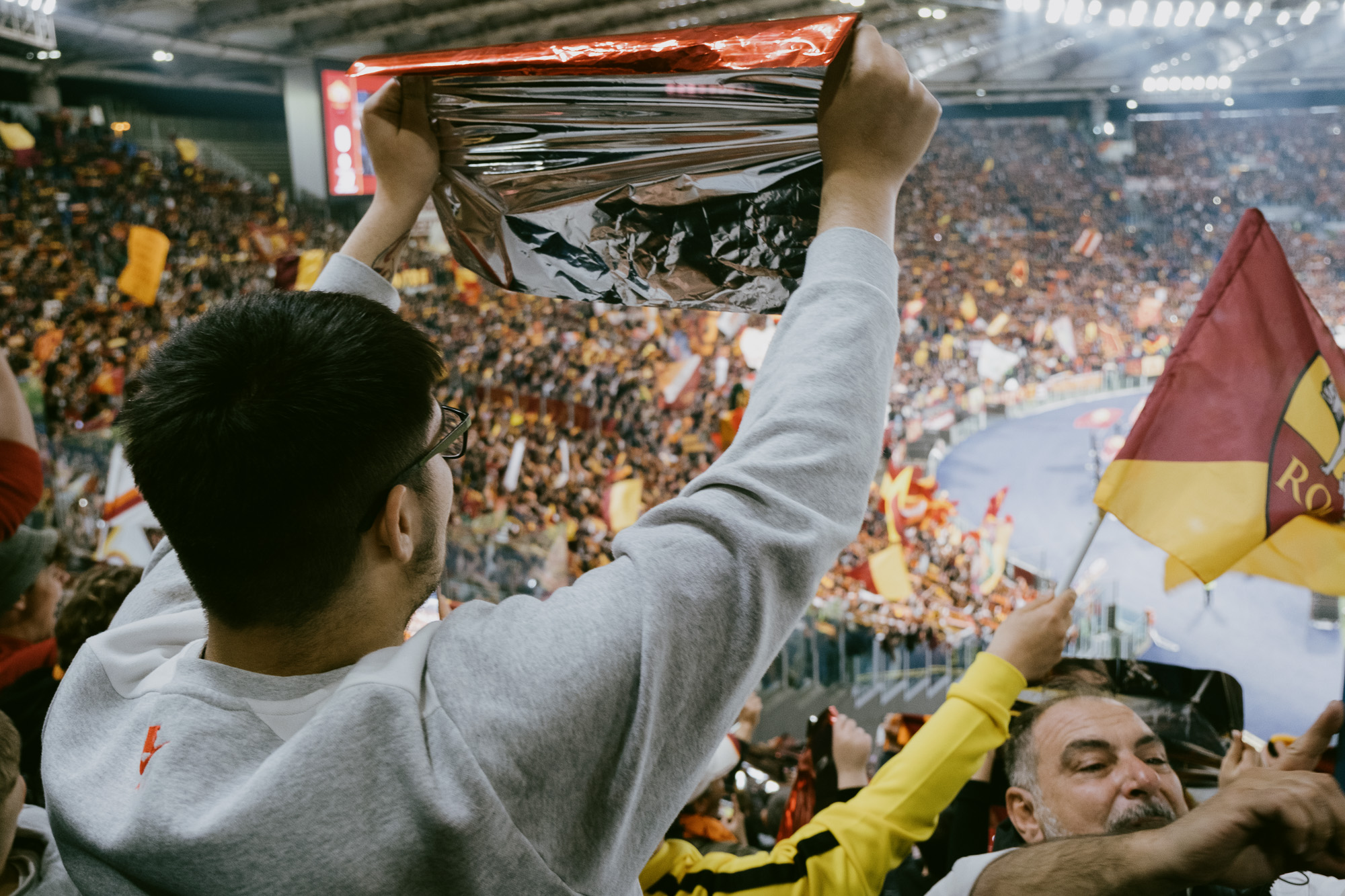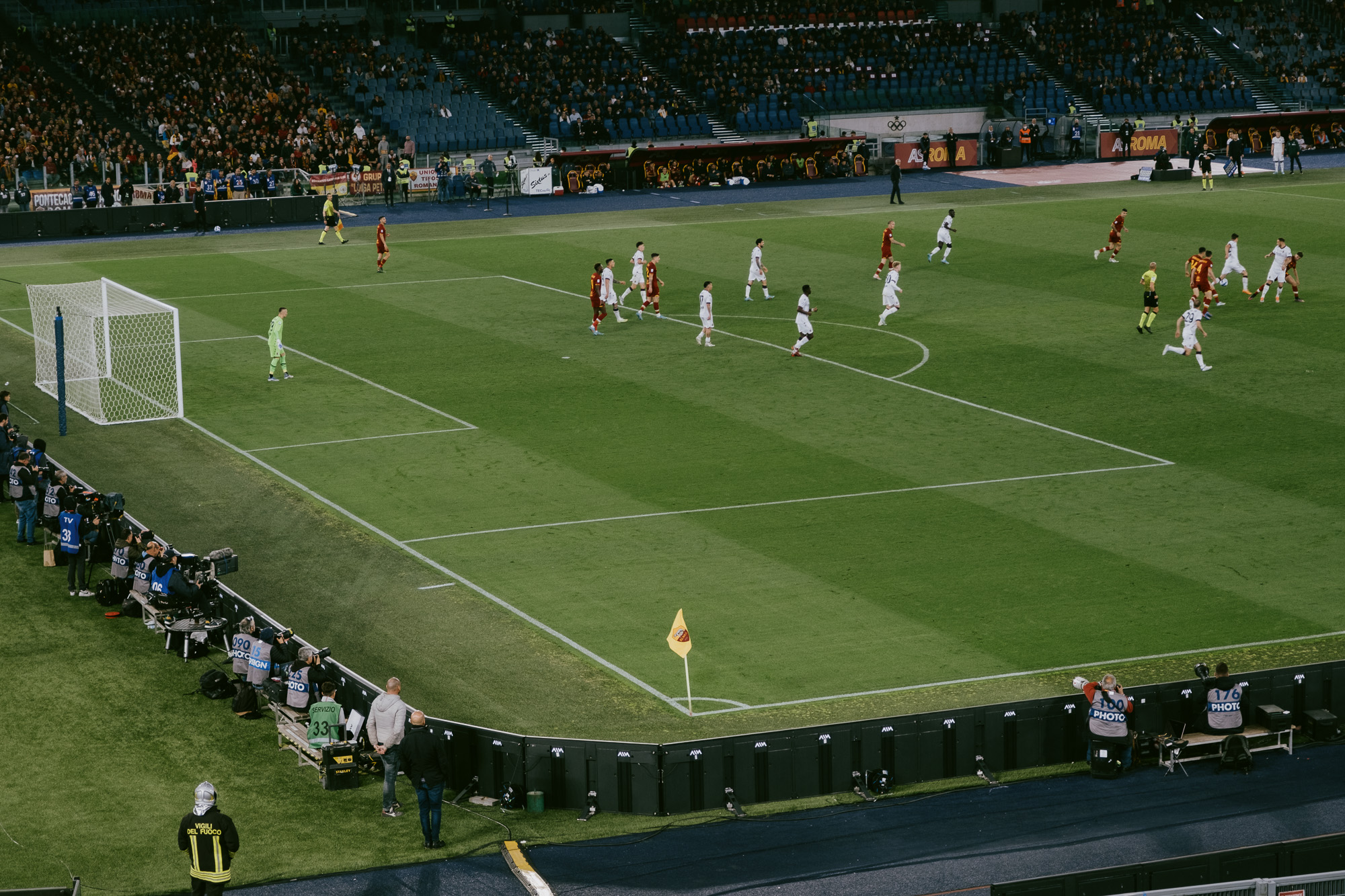Roma, Roma, Roma,
core de ’sta città.
Unico grande amore
de tanta e tanta gente
che fai sospirà
Roma, Roma, Roma,
heart of this city.
The one and only love
of so many different people
that it makes you sigh
You hear the stadium before you see it. The Stadio Olimpico, shared between hated rivals AS Roma and SS Lazio, the home of Roman football, nestles amongst the trees, with the hillside of Monte Mario behind it. You approach it down a long, open road, through several security checks, and so you only glimpse it in parts. But the sound: the sound carries. A murmur at first, then more distinct, recognisable as human voices, as singing. The hairs on the back of your neck ready themselves, sensing that they might be called into action.
Through the turnstiles, you still haven’t seen the full shape of the stadium, just a corner of it. The sound grows louder, a full din now, as you mount the steep steps up to the Tribuna Tevere, the stand that runs along the river side of the pitch. As you get to the top, the oval roof heaves into view, lights flashing around the rim, and then you see it, the full picture. To your left is the curva sud, the South curve, home to Roma’s ultras, its most hardcore fans. Hundreds of flags wave; everyone in the curva is standing, singing, as the noise fills the cavernous stadium. The air seems to crackle with electricity, and those hairs on the back of your neck are at full attention – and there’s still an hour until kick-off.
The word “ultra” is often translated as “hooligan”, which is a crude and inelegant comparison that fails to capture so much of what ultra groups are. They’re cultural, they’re social, they’re a lifestyle. They’re a way to dedicating your life to your club, a way to share that dedication with others, and a set of rituals and practices by which to act out that dedication. Those rituals include elaborately choreographed displays known as tifo. The word is thought to derive from the Italian for “typhus”, and the fans involved in these displays are called tifosi – “those infected with typhus”, essentially – which captures the feverish and obsessive nature of this fandom more accurately than “hooligan” does.
The rivalry between Lazio and Roma has a political dimension, too. There’s a stereotype that Lazio fans are right-wing – fascists, even – and that Roma fans are left-wing. There’s some truth in that. Lazio’s irriducibili, the ultra group that took over the curva nord in 1987, are inarguably right wing. They were banned from their own section of the stadium in 2017 after racially abusing black players. During their ban, some fans were allowed into what would normally be the Roma section, the curva sud; they took the opportunity to plaster the stands with anti-semitic graffiti and stickers. Lazio ultras have a long and deep connection to the neo-fascist political party Forza Nuova, and perhaps their most iconic player, Paolo di Canio, self-labels as a fascist, has a tattoo that reads DUX – as in Il Duce, as in Benito Mussolini – and was widely criticised for giving a fascist salute to Lazio fans during a Rome derby in 2005. But there are also anti-fascist supporter groups within the Lazio fan-base, Lazio was originally founded in an act of resisting the fascist government’s desire to create a single Rome club, and there are undeniably right-wing Roma ultras too. It’s a complicated picture; not all laziali are fascists; not all romanisti are socialists.
But the connection of ultras to violence is direct and inescapable. The translation to “hooligan” is wrong because it’s too narrow, not because ultras aren’t violent. And this violence isn’t just fisticuffs between fellow hard-nuts; it’s real violence, meted out indiscriminately. In 1984, following their loss to Liverpool on home turf, Roma ultras forced Liverpool fans to run a gauntlet of stones, bottles, and stabbings; the violence was repeated when the teams met again in 2001. Matches between Roma and Lazio, the Derby della Capitale, are famously fraught.
That real violence, by no means common at matches but always lurking by reputation, gives an edge to what might otherwise seem merely theatrical – camp, even. When Roma played Leicester in the Europa Conference League, they unfurled a tifo that featured two Roman soldiers in full armour, with a banner below emblazoned with the Latin phrase IN BRITANNIA CUNCTI NOMEN ROMANORUM HORREBANT: “in Britain you all trembled at the name of the Romans”. That message, delivered from a wall of thousands of snarling ultras, produces a similar effect in modern times.
They’re violent, they have links to organised crime and unsavoury politics. They should be easy to dislike. And yet to dismiss them as hooligans is to miss the point. They contain those unsavoury elements because they contain everything that’s human, good and bad. There’s tribalism and politics and chauvinism and violence, but there’s also love and pride and passion; and the effect of the ultras is to intensify all those things, to concentrate them.
This isn’t corporate entertainment, designed to be a spectacle. It’s not family un-friendly, but nor is it a conscious and cynical hook, conjured up by a marketer to appeal to that crucial younger demographic. It’s organic, the product of genuine passion, bottom-up, messy and complex but real. It’s part war dance, part ecstatic religious service, but it’s all Roman. As the pre-match ritual reaches its climax, the song you hear is fitting. It’s by Antonello Venditti, Rome born and bred, a local guy singing in Roman dialect of Rome and of Roma. And he sings, and 40,000 Romanisti sing with him:
Roma Roma Roma
lassace cantà,
da ’sta voce nasce n’coro
so’ centomila voci
ciai fatto ’nnamorà
Roma Roma Roma,
let us start to sing.
From this voice is born a chorus
of a hundred thousand voices
that made me fall in love

